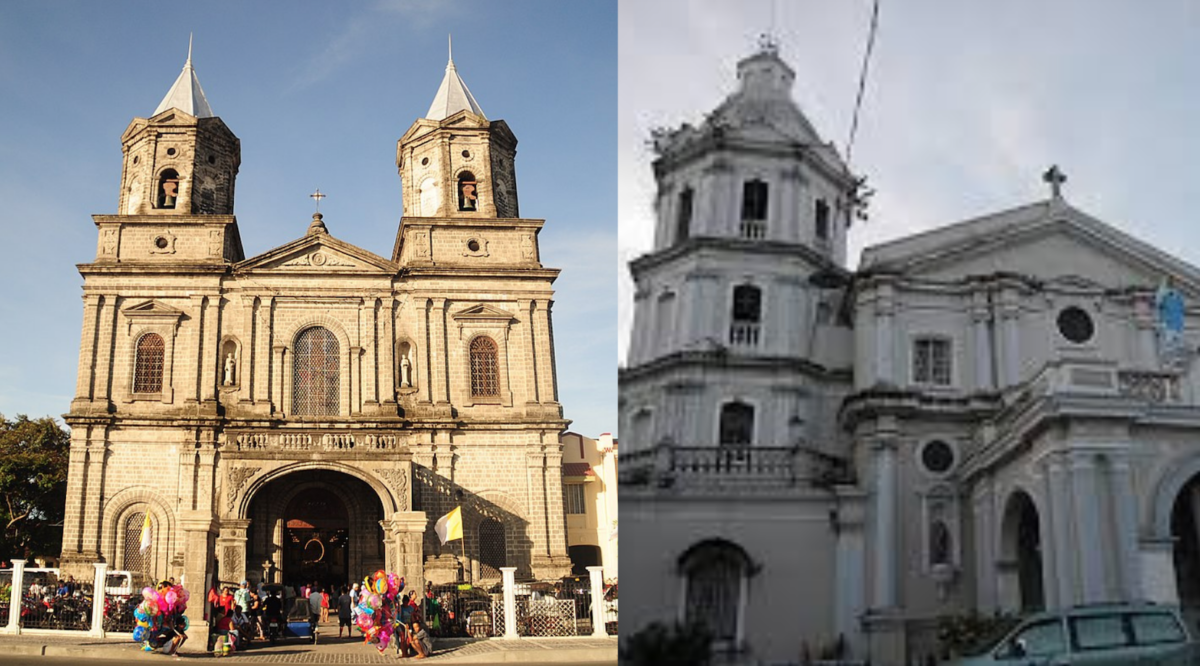July 1899: Combat wounds, deaths during the Philippine-American War

The historic churches in San Fernando and Angeles, Pampanga. Image: Wikimedia Commons
There was a common belief that during the first rainy season of the Philippine-American War that both sides were quiescent and bogged down. Essentially, the war was on a hiatus.
The Americans controlled San Fernando and its surrounding territory in Pampanga Province. San Fernando was the American military operational headquarters. The Philippine revolutionary forces held Angeles and the surrounding countryside.
This common belief was a fallacy. The fighting in Pampanga Province was never on a break. The fighting never completely stopped during the rainy season. Primary sources showed that Pampanga Province in the areas between San Fernando to Angeles had a steady stream of combat wounds and deaths. The Philippine provinces outside of Pampanga Province had more illnesses and deaths from diseases.
The commander of American forces in the Philippines, General Elwell Otis, maintained regular correspondence with United States military leaders at the War Department in Washington DC. The communication was entitled “Correspondence Related to the War with Spain April 15, 1898, to July 30, 1902.” The letters detailed the wounds and deaths that American soldiers received from Philippine revolutionaries during the rainy season. According to General Otis, the Americans were slowly gaining territory heading north to Angeles, but there was a heavy cost for the advances.
During the rainy season, the Americans were able to capture the Pampanga countryside from Candaba to Santa Rita, Guagua, and Bacolor. With each advance, the communication from General Otis described the horrific wounds and American deaths. For example, on July 14, 1899, several American soldiers received arm and thigh wounds.
In addition to the continued combat during rainy season, the Americans had other urgent issues to deal with in July. The Americans had significant change over in their troops. During the Spanish-American War, the United States recruited their military forces from National Guard regiments. Most states proudly contributed soldiers to the war effort. The enlistments of these state volunteers were expiring.
The Tenth Pennsylvania Volunteers were one of these National Guard regiments. It was the only regiment from east of the Mississippi River to be sent to the Philippines during the Spanish-American War. The soldiers had been in the Philippines for over one year. They originally thought that they were heading home at the conclusion of the Treaty of Paris.
The Tenth Pennsylvania regiment served during the Battle of Malate, the staged Battle of Manila, the Battle of La Loma, the Battle of Malolos, and endured many days in entrenchments. On July 1, 1899, they were aboard a ship in Manila Bay awaiting departure for home.
For the newly arriving American soldiers, the United States Army decided to recruit US Volunteers from many geographical areas of the United States instead of state volunteers. The army had more direct control of these volunteers. Most of these soldiers had signed enlistment contracts which expired in late 1901.
During the rainy season of 1899, Filipino leaders also had many pressing tasks. Since the murder of General Antonio Luna on June 5, 1899, the Filipinos had an enormous gap to fill in military leadership. Based on the correspondence by General Otis, the Philippine revolutionaries under new leadership were able to inflict a heavy cost on the American soldiers and slowed the American advance into the Pampanga countryside.
The Philippine political capital was now safely located in San Isidro, Nueva Ecija. This was the third location of the Philippine seat of government since the evacuation of Malolos at the end of March 1899. The military operational headquarters was based in Angeles.
Although combat wounds and deaths were more common in Pampanga Province than diseases during the rainy season of 1899, the threat of diseases was more prevalent during the Philippine-American War. Most of the 20,000 Philippine revolutionaries who died during the war were from diseases. Most of the 4,200 American deaths during the war were from diseases. The estimated 200,000 Filipino civilians who died during the war were killed by diseases.
These were the most common diseases: cholera and typhoid fever, both bacterial infections caused by contaminated water and food. The diseases presented with diarrhea, dehydration and fever. Dysentery could also be bacterial infection, but dysentery could also be caused by parasites. Poor sanitation was the immediate cause of the disease. Dysentery presented with bloody diarrhea. Malaria was caused by a parasite from a mosquito bite. Fever and chills were the common symptoms of malaria.
For the common American and Philippine soldiers, was it better to be shot by a potentially deadly bullet or develop a potentially fatal disease? During this pre-antibiotic era, the answers were not good.
Dennis Edward Flake is the author of three books on Philippine-American history. He is a Public Historian and a former park ranger in interpretation for the National Park Service at the Eisenhower National Historic Site in Gettysburg, PA. He can be contacted at: flakedennis@gmail.com

